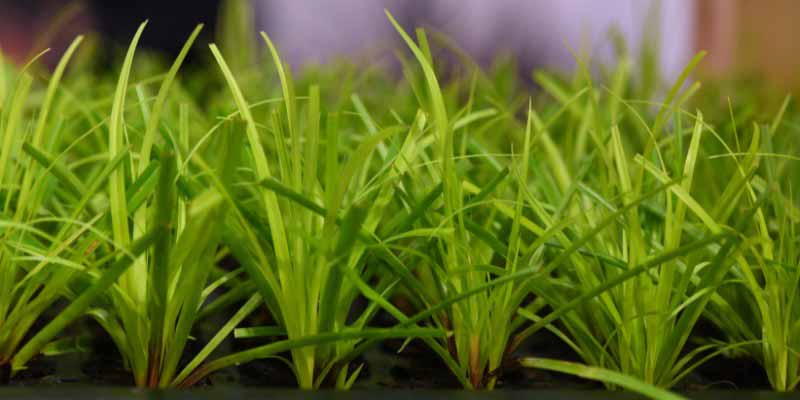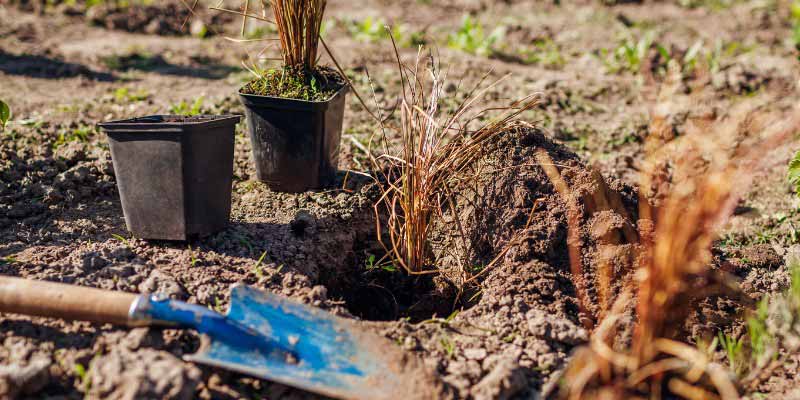Carex, also known as sedges, are perennial grasses prized for their striking foliage. They form graceful, flexible clumps with evergreen, ribbon-like leaves, offering a remarkable diversity of colours. Easy to grow and hardy, they thrive in ordinary soils that don’t dry out too much in summer, as they prefer fresh to moist soils. To propagate your Carex quickly and efficiently, dividing the clumps in spring is the simplest method. This technique not only rejuvenates ageing plants but also expands your plantings at minimal cost and allows you to easily share your favourite varieties. Discover how to propagate Carex effortlessly through division!
Carex: Grasses Like No Other
Carex are perennial plants belonging to the large Cyperaceae family, which includes Papyrus, though they are often associated with grasses. With over 2,000 species worldwide, they offer an incredible diversity of forms and colours, featuring fine foliage in brown, orange, green, grey, glaucous, yellow, white, solid, or variegated. Hardy (often down to -20°C) and low-maintenance, Carex adapt to various environments. They thrive in sun or partial shade, preferably in soil that remains fresh or even moist for some, though they tolerate dry shade. Rarely exceeding 1 metre in height, they are ideal for borders, rockeries, ground cover, or pots. They are also highly valued for their year-round decorative appeal, as their foliage is generally evergreen, remaining attractive even in winter.

Why Propagate Carex?
Sowing is possible but less reliable. Carex sometimes self-seed naturally. You can spot young plants from these natural sowings, carefully lift them, and replant them elsewhere. However, keep in mind that these new plants may differ from the original variety, as sowing doesn’t always guarantee fidelity to the parent plant’s characteristics. As with grasses, the best method for propagating Carex remains division. There are several reasons to propagate your Carex:
- Rejuvenate tired clumps: After a few years (4-5 years), Carex may become less dense in the centre. Division stimulates growth and gives them a new lease of life.
- Expand your plantings: By dividing a mature plant, you get several new plants to replant elsewhere without spending a penny.
- Avoid degeneration: Unlike sowing, division preserves the exact characteristics of the parent plant, ideal if you’re fond of a specific variety.
- Control spread: While most Carex are cespitose, growing in clumps, some have rootstocks that allow them to spread by suckering. Though rarely invasive, dividing them can help manage their growth.
When to Divide Carex?
The ideal time to divide Carex clumps is from April-May until July, when the soil is warm and moisture is still sufficient to encourage rooting.
My tip: Avoid dividing during extreme heat or frost to prevent stressing the plant. It’s best to divide on a day when the soil is slightly moist but neither waterlogged nor too dry, making it easier to lift the plant without damaging the roots.
How to Divide Carex?
Required tools
- A spade
- A pruning shear or a clean, sharp knife
- Gardening gloves: some Carex have sharp leaves
Steps to divide Carex
- Choose a well-established Carex, grown for at least 4 to 5 years. The more vigorous the clump, the easier and more productive the division will be.
- Use a spade to dig around the plant in a wide circle to avoid damaging the roots.
- Gently lift the root ball.
- Remove excess soil to expose the base of the roots.
- Use a sharp knife or sturdy pruning shear.
- Divide the clump into 3 to 4 sections, ensuring each piece has healthy roots and some foliage. If the root ball is very dense, don’t hesitate to use the spade to slice through more easily. Don’t be afraid to be a bit forceful! Carex are robust and tolerate division well.
- Plant the new clumps directly in the ground or in pots if you prefer to grow them in a nursery.
- Water thoroughly to settle the soil around the roots.

Aftercare: Pamper Your Young Carex
- Care for your young plants by watering them regularly (but never excessively!) during the first few months to help them establish well.
- If you divided in spring, apply a layer of mulch around the young plants to retain moisture and suppress weeds.
- If you opted for pots, replant your Carex in the ground the following spring, once the roots have colonised the substrate.

Additional Tips for Dividing Carex Successfully
- If the weather is dry, water the clump the day before dividing. This will soften the soil and make it easier to lift the root ball without stressing the roots too much.
- Divide early in the morning or late afternoon when temperatures are milder. This reduces water stress and helps young plants cope better with transplantation.
- Don’t divide a diseased or weak Carex; wait until it regains vigour before dividing. Division can worsen its condition and compromise survival. Identify and treat any issues (pests, deficiencies, water stress) first.
- It may take a few weeks for young divisions to show signs of growth. Don’t worry if recovery seems slow—this is normal! If leaves yellow or wilt slightly, it’s not necessarily alarming. This is part of the adaptation process. Be patient: root growth often precedes visible foliage recovery.
































Comments